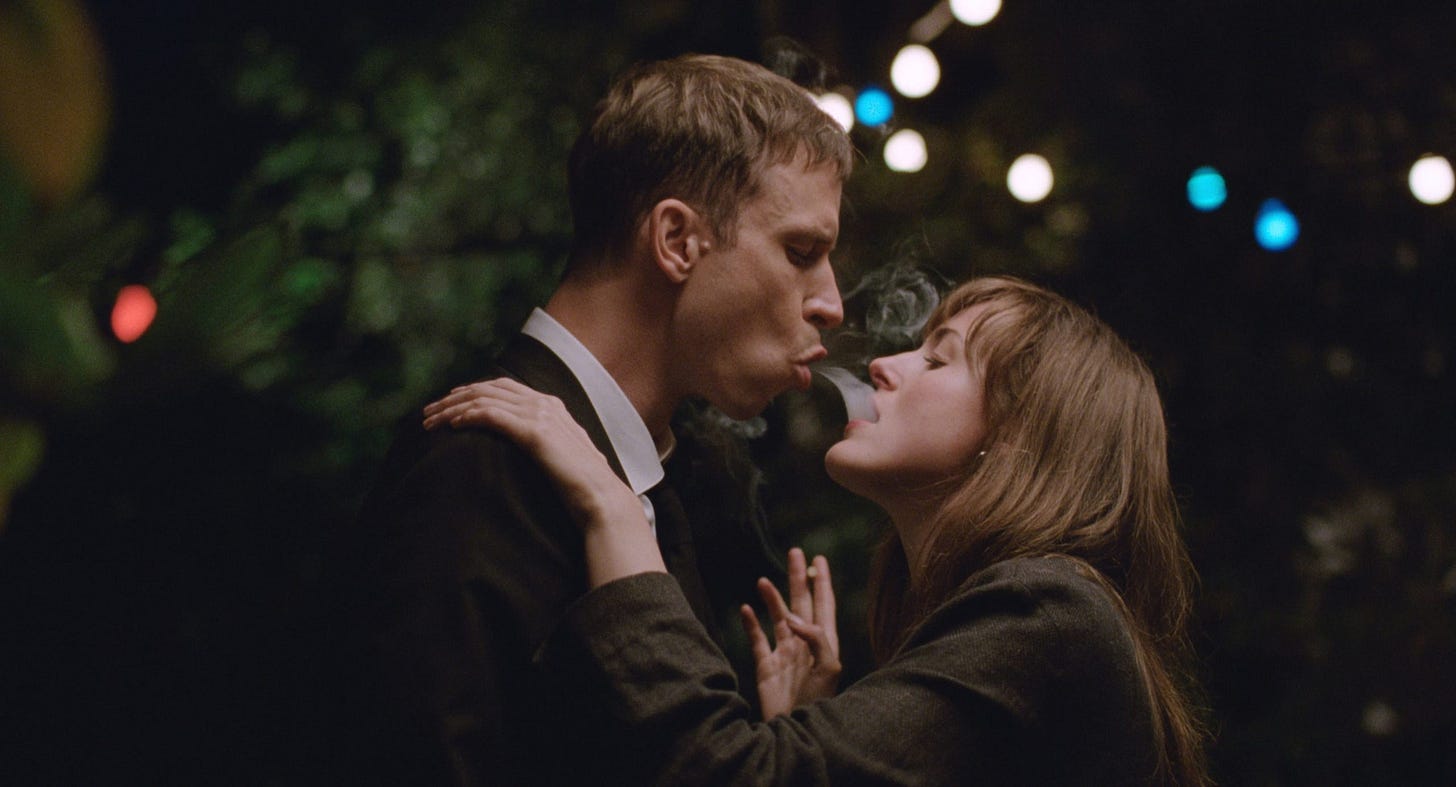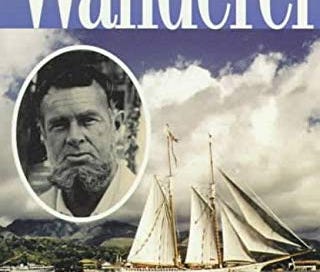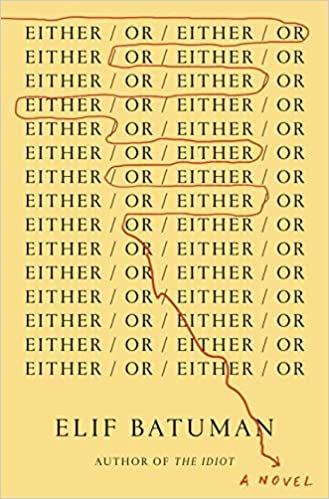The things I’ve been reading do not, for a change, include a Patrick O’Brian novel (though I expect I will get to The Far Side of the World eventually). But I notice a common thread in the books and films that have interested me lately, the theme of artistic vocation. Why is it that I, at 51 years old, continue to be so fascinated by the Kunstlerroman—the novel (or as the case may be, film—though the two films discussed below are extremely and self-consciously literary) about an artist’s discovery of their calling? Perhaps I’m a perpetual ephebe in my own mind, perpetually a beginner. (I have been playing around with screenwriting, working on the pilot for a half-hour dramedy—my favorite genre of the streaming age, of shows like Better Things, I Love Dick, Ramy, Transparent, The Bear, etc.) In more or less the order I encountered them, here are the things I’ve watched and read lately that have moved me:
Sterling Hayden, Wanderer (1963)
I stumbled across Hayden’s autobiography in the stacks of the Evanston Public Library while looking for a biography of Nathaniel Hawthorne; it was the cover that grabbed me, with its titular schooner and the bizarre author photo that scarcely hints at Hayden’s remarkable physical beauty. (There’s a more recent edition, on the cover of which the actor’is as shirtless and dishy as one could wish.) He’s probably best known today for his performance as General Jack D. Ripper in Doctor Strangelove (1964) which he must have been filming when the book was first published; he was also the police captain gunned down by Al Pacino in The Godfather. He starred in a whole lot of B movies and in a few films of distinction (The Asphalt Jungle, Johnny Guitar, The Killing). He was also, it turns out, a pretty good writer: a little florid and self-pitying, but gorgeous when writing about the sea, which the book makes clear was his real vocation, rather than Hollywood.
The book’s real subject, its deep context, which isn’t revealed to the reader until near the end (but readers in 1963 would have brought this knowledge to the book) is Hayden’s naming of names before the House Un-American Activities Committee in an understandable but ignoble attempt to preserve his career. Hayden’s shame and guilt over this action seems to flow ineluctably from his sense of the ridiculousness of his profession; like some other actors of the era (Marlon Brando comes to mind), he seems to have been tormented by what he felt to be the unmanliness of acting. Hayden grew up fatherless, unmoored bitterly conscious of the ironic contrast between his manly 6’5” exterior and the childishness within. He turns to writing as a purer and more honest way of expressing himself than acting can provide, and he pulls it off.
Middle age! What is it about the late forties and early fifties that has even successful people looking for something new? I’m not talking about sports cars and trophy wives (though Hayden certainly does) but the desire to be new at something. Beginner’s mind, apprenticeship—these things have a fascination for me, as a teacher, as a writer, and as someone who wonders what it might look like to flourish, particularly at a time when the world around us seems a bit darker every day.
The Worst Person in the World (2021), directed by Joachim Trier

The Worst Person in the World doesn’t really seem to be about vocation; as Richard Brody complains in his review of the film, the characters seem mostly indifferent to real questions about art, politics, or social issues, focusing to a fault on the central character’s personal and romantic life. Yet the film’s prologue begins with the restless heroine’s picking up and discarding one profession after another (medicine, psychology, photography) and ends with her settled in the vocation of photographer, only after having shed the romantic partnerships with which the bulk of the film is concerned. A.O. Scott wonders if Julie isn’t a middle-aged man’s fantasy of a young woman, and I doubt the film passes the Bechdel test—Julie’s lack of female friends suggests a real failure of imagination on writer-director Joachim Trier’s part. On the other hand, Renate Reinsve’s performance has been deservedly praised for its charismatic naturalism: you believe in Julie every moment she’s on screen.
Julie spends most of the film in professional limbo, working at a bookstore (which in Norway apparently means wearing a rather humiliating black uniform) at age 30 and beyond. Her boyfriend, Aksel, whom she moves in with after discarding a series of less satisfactory men, is a Gen-X kind of guy: a successful R. Crumb-style cartoonist (though his indie cred is severely damaged when Fritz-the-Cat-like comic book Bobcat gets sanitized into an animated Christmas film). Millennial Julie seems less interested in Aksel’s work or his work ethic than in the simple fact of his arrival at a place of some significance in the Oslo cultural scene. He has the artistic identity she wants, and at which she takes occasional stabs, most notably by writing a personal essay called “Oral Sex in the Age of #MeToo” that has a modest viral success but doesn’t otherwise seem to lead anywhere. Meanwhile Aksel is ready to settle down and have kids; Julie isn’t. Her escape hatch is an amiable doofus named Eivind; in spite of one indescribably hot evening together testing the boundaries of intimacy without actually “cheating” on their respective partners, once they’re actually together their relationship lacks sizzle, and when Julie gets pregnant she starts questioning barista Eivind’s lack of ambition. Her ex, Aksel, enters a stark decline; first he is eviscerated for his sexism on a radio show (his Gen-X defense of the value of transgression falls on predictably deaf ears), then he’s diagnosed with pancreatic cancer. Anders Danielsen Lie is remarkable in the role, wallowing in self-pity at one moment and radiantly transcending it the next—I wonder, too, if his training as a doctor helped make his portrayal of a cancer patient especially convincing. I’ll be thinking for a while about this moving monologue in which he elegizes his (my) generation and its relationship to stuff: books, records, comics, and the vanished stores that sold them.
At film’s end Julie we see Julie working on the set of a film under COVID protocols—between shots people are masked—a slightly unsettling intrusion on the illusion of normalcy and the world as we’ve always known it, a kind of rupture in the ontology of streaming, which has such a strange relationship to the present compared with the collectively experienced TV and movies of old. Is this new professional identity enough to make her an artist, or an adult? It’s a bittersweet ending—certainly the presence of the masks suggests that, for Julie and the eternal manic-pixie youthfulness she symbolizes, it’s time to put away childish things.
Elif Batuman, Either/Or (2022)
The greatest novelists arguably never invent anything: James Joyce, Virginia Woolf, and Marcel Proust wrote more or less transparently about the people that they knew and the experience of being themselves, and the result was transcendent fiction that combined lyrical portraits of subjectivity with acute investigations of social life. Selin, the transparently autobiographical narrator of Elif Batuman’s second novel and third book to be named after another great (man’s) book, wants to become a novelist, but worries she lacks some crucial ingredient; the distinction between “writer” and “novelist,” with the former being lesser than the latter, haunts her (and her author). What kind of writer can she be? What sort of life can she live? Selin worries engagingly about this throughout the novel, which covers her second year at Harvard and concludes with a travelogue section in which she visits central Turkey to write for Let’s Go. All the time she’s navigating the shoals of compulsory heterosexuality, losing her virginity excruciatingly to a senior at school, then falling in with a variety of more or less creepy men on her travels. (You can see the overlap with The Worst Person in the World right away, can’t you? Both film and novel could plausibly be titled Promising Young Woman—or after the Henry James novel that electrifies Selin when she encounters it in the novel’s closing pages, The Portrait of a Lady.)
Either/Or takes its title from Søren Kierkegaard’s 1843 book Either/Or: A Fragment of Life, which presents the reader with two alternative ways of being: the aesthetic or the ethical mode of life. Both of these modes, somewhat oddly, depend upon one’s relationship to sex and marriage; the aesthetic approach is represented by “The Seducer’s Diary,” in which the narrator thoroughly gaslights a young woman named Cordelia; the point is not to sleep with her but to bring Cordelia to the point of doing so, then to manipulating her into breaking up with him. That’s the “either”; the “or” is narrated by a retired judge who argues that only through committing to the ethical institution of marriage can a person truly become themselves. Kierkegaard’s book, a bizarre blend of fiction, philosophy, essay, and harangue, is itself a model for the sort of self-referential autofiction that has proliferated over the past dozen years, most monumentally in Karl Ove Knausgaard’s My Struggle novels, though in some ways I prefer the acerbic approach taken by Rachel Cusk in her Outline trilogy.
Selin is one of those endearing, maddening intellectuals who is as much read by books as a reader of them; in “The Seducer’s Diary” she recognizes the relationship between herself and a rather uninteresting Hungarian mathematician named Ivan, detailed to the point of tedium in Batuman’s previous novel, The Idiot. Either/Or is much more satisfying, because it’s very funny, and nearly every sentence is laced by a kind of unstable dramatic irony: as Selin poses question after question about how to live and what to do, we are conscious of her naivete and her place in Batuman’s larger project of turning her life into subtly feminist art. The books Selin reads are every bit as important as the friends and lovers she encounters, maybe more: they include Kierkegaard, Proust, Andre Breton’s Nadja, Freud’s Dora and The Interpretation of Dreams, Pushkin’s Eugene Onegin, Henry James’s The Portrait of a Lady, and, hilariously, The Rules. The comedy here is that Selin reads Proust and Breton (and all the other dead white males in her canon) in the same spirit in which most people presumably reach The Rules: as how-to books. If I’m honest, though, I also read literature this way, and always have. What makes a writer a writer—though not necessarily a novelist—has to be this naive relationship to reading that you can never permit yourself to lose entirely, at the risk of becoming a mere husk.
Is Selin/Batuman a writer or a novelist? What sort of artist will she become? The uncanny effect of Proust’s A la recherche du temps perdu is generated by the narrator’s professed inability to become an artist, though the existence of the novel we’re reading demonstrates that he will become/is already an artist, and a very great one. Batuman’s project seems somewhat similar, though I wonder: is she going to write a novel for all four years of her undergraduate education? I rather hope she’ll take us someplace unexpected instead.
Drive My Car (2021), directed by Ryusuke Hamaguchi
Drive My Car is a three-hour masterpiece about art, grief, and how the former can defend you against the latter, sometimes for years, until it finally steers you into the heart of what you most desperately wanted to avoid and most desperately need to feel. Kafuku, the protagonist, is a theater actor and director who specializes in multilingual productions of classic plays: actors from all over Asia perform in their native languages (Japanese, Tagalog, Mandarin, English, etc.) while supertitles are projected above the stage. After his wife’s sudden death from a cerebral hemorrhage he forsakes his trademark role, the title character of Chekhov’s Uncle Vanya, even as he accepts a commission to direct the play for a festival in Hiroshima. We hear Chekhov’s text throughout the film, in the form of a recording of the lines of every character except Vanya, which Kafuku’s wife Oto made for him, in a kind of dual haunting.
Kafuku’s artistic practice centers on his bright red Saab, in which he drives alone while listening to the tape, memorizing not only his lines but everyone else’s. This closed circuit is broken when, for safety reasons, the festival assigns him a driver, Misaki Watari (Tōko Miura, in a performance of remarkable subtlety), so that it’s now the two of them listening again and again to a text that, as Kafuku tells one of his actors, “is terrifying. When you say his lines, it drags out the real you.” Kafuku is a successful and established artist; Vanya is an embittered never-was, who blames his brother-in-law, a famous professor, for somehow preventing Vanya from fulfilling his potential. Yet there’s something about the role that has become too truthful for the grieving Kafuku to bear.
Kafuku’s grief is complicated by the complicated relationship he had with Oto. The two of them lost their only child, a daughter, to pneumonia when she was four; they put the pieces back together by focusing on their work—she’s a screenwriter, he’s an actor. Their relationship and artistic practices are sutured by sex, and Oto’s practice of inventing stories before, during, and after the act. In the morning, Kafuku recounts the story she told to him, and she writes it down. (Once again, sex plays a generative but troubling role in an artistic becoming; Batuman’s Selin finds sex to be necessary because it’s novelistic, it’s the heart of “life”; yet she doesn’t seem to find the act itself very comfortable or satisfying. Julie, in The Worst Person in the World, implicitly chooses celibacy when she finally becomes an artist. This maybe even comes up with Sterling Hayden, but I’m not going to try and turn him into a Promising Young Woman just now.) During their marriage, Oto cheated continually on Kafuku with other men, which he knew, though as far as we know she didn’t know that he knew. This seems to be the key to the blockage that’s preventing him from fully entering into his grief, and from submitting himself to the terrors of Chekhov’s text—that is, of art.
Kafuku resists Watari’s role as his driver at first, but gradually (the film’s length is absolutely crucial to this effect) they become not friends exactly, but partners in the project of feeling and overcoming loss. (Watari is 23, the same age Kafuku’s daughter would have been if she’d lived.) We learn that Watari endured an abusive relationship with her mother, who had multiple personality disorder, and that she blames herself for not saving her mother from the landslide that destroyed their home five years ago. “I hated her,” she tells Kafuku, “but that wasn’t the only thing I felt about her.” Near the film’s conclusion, as the two of them contemplate the site where her house once stood, she asks him about the similar contradiction that’s been eating him alive:
Mr. Kafuku,
about Oto. Would it be hard for you to accept her,
everything about her, as genuine?
Maybe there was nothing
mysterious about her.
Would it be hard to think
that she was simply like that?
That she loved you dearly and
that she sought other men constantly
don't seem to contradict
each other or sound deceptive to me.
“I should have been hurt properly,” is Kafuku’s remarkable response. Because of his terror of loss and his desire not to rock the boat, Kafuku never confronted Oto about her extramarital dalliances, and never confronted his own feelings of betrayal. He has been frozen by grief for his daughter, and double-frozen by his wife’s death. Standing in the snow in a remote village in Hokkaido with a young woman he barely knows, he finally accepts his loss, in Chekhovian language repeated in a different key in the film’s extraordinary final scene. Here, the actress playing Sonya (Park Yoo Rim) performs her closing monologue in Korean Sign Language:
There’s more I could say about this film—more I could say about other things I’ve been watching and reading that have moved me lately, and that all in different ways are about becoming yourself: Fanny Howe’s strange and wonderful 1976 novel Bronte Wilde, the Marjorie Perloff-edited Private Notebooks of Ludwig Wittgenstein, even the mesmerizingly tense Hulu show about an Italian beef joint in Chicago, The Bear. But I’m going to leave things where they are.
Your periodic reminder that I’ve published a number of books that you can purchase and read and tell people about.
In addition to my little TV pilot, this summer I’ve been working on a long-gestating novel about my distant cousin, the boxer Barney Ross. I took my first stab at writing about him in this digital essay.
The pandemic isn’t over, you might have noticed. When it first started in 2020, I surfed the isolation by writing a series of hundred-word prose poems, one per day for a hundred days. You can read them at my old blog if you wanna, starting here.







